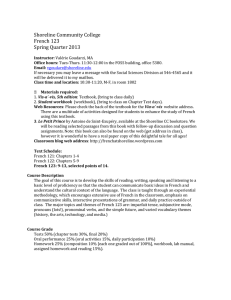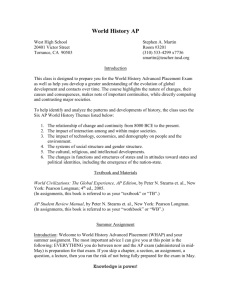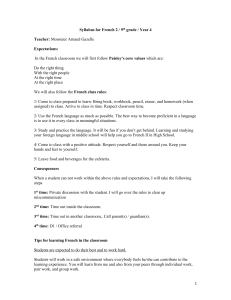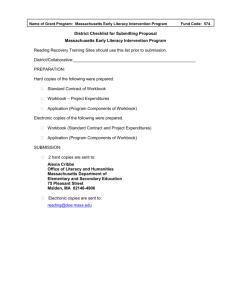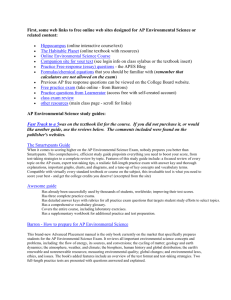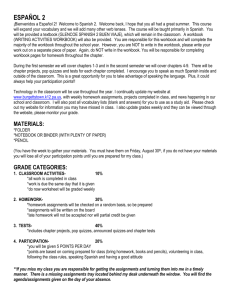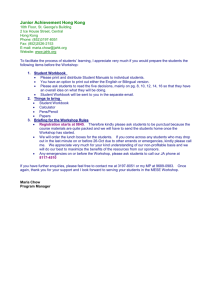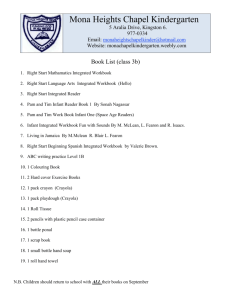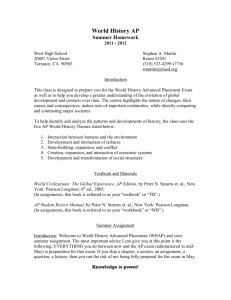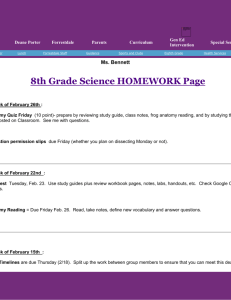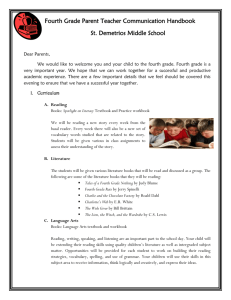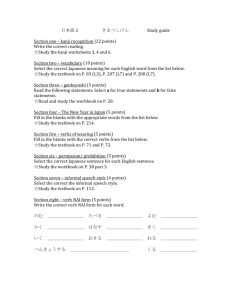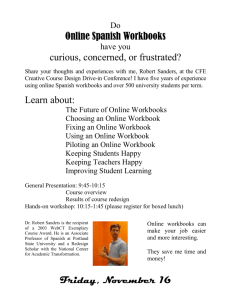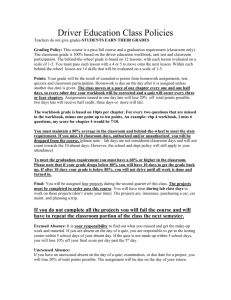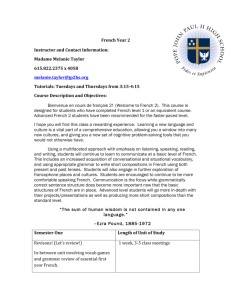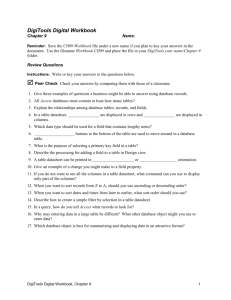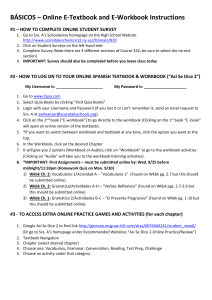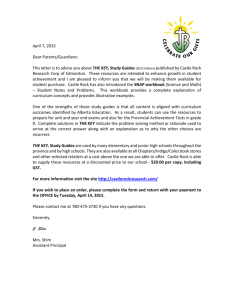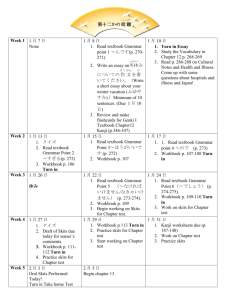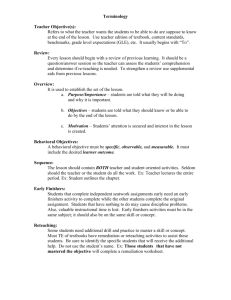Unit #1 – Chemical Reactions and Their Practical Applications
advertisement
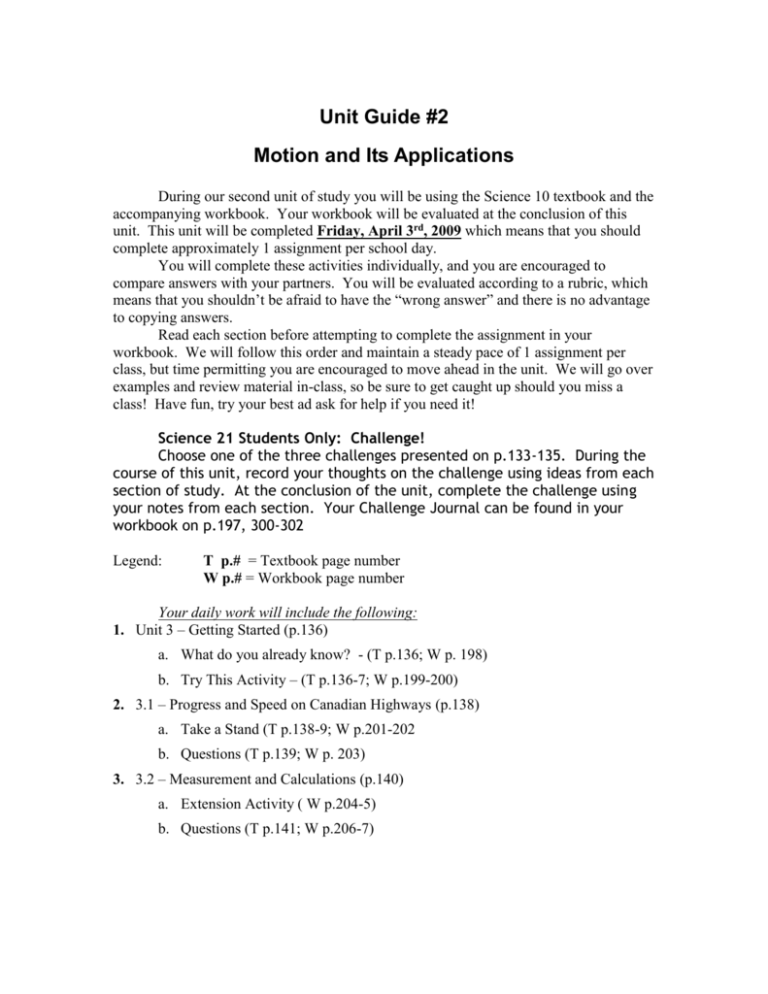
Unit Guide #2 Motion and Its Applications During our second unit of study you will be using the Science 10 textbook and the accompanying workbook. Your workbook will be evaluated at the conclusion of this unit. This unit will be completed Friday, April 3rd, 2009 which means that you should complete approximately 1 assignment per school day. You will complete these activities individually, and you are encouraged to compare answers with your partners. You will be evaluated according to a rubric, which means that you shouldn’t be afraid to have the “wrong answer” and there is no advantage to copying answers. Read each section before attempting to complete the assignment in your workbook. We will follow this order and maintain a steady pace of 1 assignment per class, but time permitting you are encouraged to move ahead in the unit. We will go over examples and review material in-class, so be sure to get caught up should you miss a class! Have fun, try your best ad ask for help if you need it! Science 21 Students Only: Challenge! Choose one of the three challenges presented on p.133-135. During the course of this unit, record your thoughts on the challenge using ideas from each section of study. At the conclusion of the unit, complete the challenge using your notes from each section. Your Challenge Journal can be found in your workbook on p.197, 300-302 Legend: T p.# = Textbook page number W p.# = Workbook page number Your daily work will include the following: 1. Unit 3 – Getting Started (p.136) a. What do you already know? - (T p.136; W p. 198) b. Try This Activity – (T p.136-7; W p.199-200) 2. 3.1 – Progress and Speed on Canadian Highways (p.138) a. Take a Stand (T p.138-9; W p.201-202 b. Questions (T p.139; W p. 203) 3. 3.2 – Measurement and Calculations (p.140) a. Extension Activity ( W p.204-5) b. Questions (T p.141; W p.206-7) 4. 3.5 – Average Speed (p.146) a. Try This Activity (T. p148; W p.216) b. Questions (T p.149; W p.218-20) 5. 3.7 – Instantaneous and Constant Speed (p.152) a. Extension Activity (W p.225) b. Try This Activity (T p.153; W p.226) c. Questions (T p.153; W p.227) 6. 3.8 - Distance-Time Graphs (p.154) a. Extension Activity (W p.228) b. Questions (T p.155; W p.230) 7. 3.11 – Vector Quantities (p.160) a. Extension Activity (W p.246) – omit #6; use glossary if necessary b. Questions (T p.161; W p.248) 8. 3.16 – Position-Time Graphs (p.174) a. Questions (T p.176; W p.271) 9. OPTIONAL 3.17 – Career Profile: Police Constable (p.177) a. Questions (T p.177; W p.274) 10. 3.18 – Defining Acceleration (p.178) a. Questions (T p.181; W p.276) 11. 3.19 – Velocity Comparisons (p.182) a. Report (T p.183; W p.279) 12. UNIT 2 Complete! (p.186, 188) a. What have you learned? (W p.296) b. Complete the following questions from p.188 of your textbook on a separate piece of paper to be handed in after your exam. #1, 2, 3(ab), 4, 5, 6, 7, 11, 13, 16 Sample Workbook Rubric Score 5 4-3 2-1 0 Degree of Completion Student has completed all assignments; questions are answered in detail and have been corrected following review Student has completed nearly all assignments; questions are answered with some detail/ have not been consistently corrected following review Student has completed a fraction of assignments; questions are answered with little detail and/or have not been corrected following review Student has completed very few assignments; questions are answered superficially with little attention to detail Quality Answers are in complete sentences, address the question and include data from student resources Answers are mostly in complete sentences; answers typically address the problem, often includes data from student resources Answers are in jotnote form, answers rarely address the question, includes very little data Answers are difficult to understand, there is no clear relationship to the question, includes no data Student completes work independently; student asks for help when necessary; student actively participates with other students in the process and review of their activities Student completes work mostly independently; rarely takes an active role in the process or review of activities Student does not complete work independently; student does not take an active role in the process or review of activities Student has given a personal opinion in their response to the question; their opinion is thoroughly explained using resources available Student has not given a personal opinion in response to the question; their opinion is not explained Effort Personal
